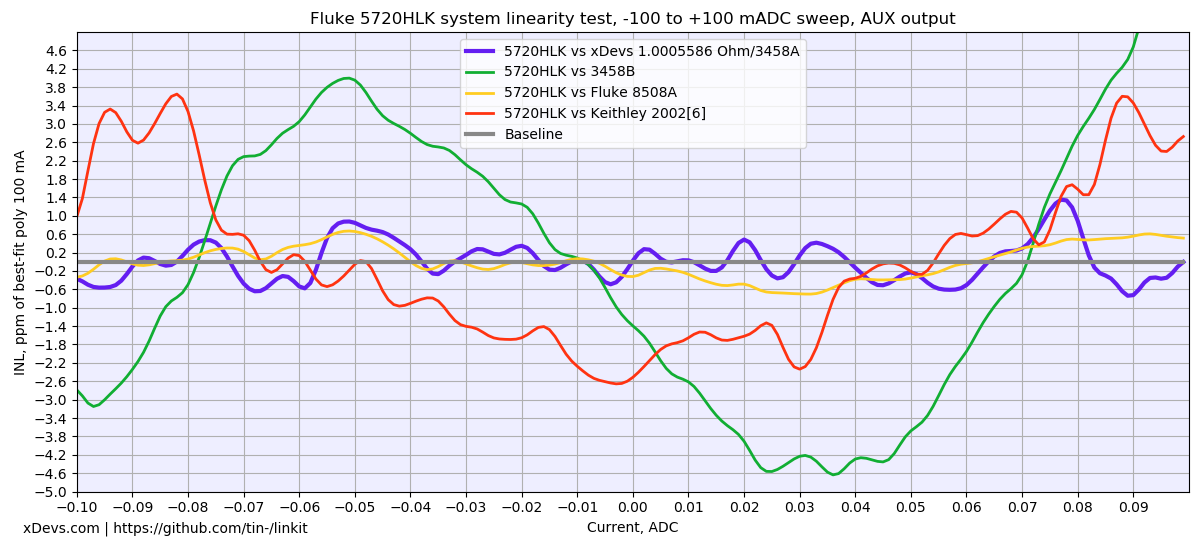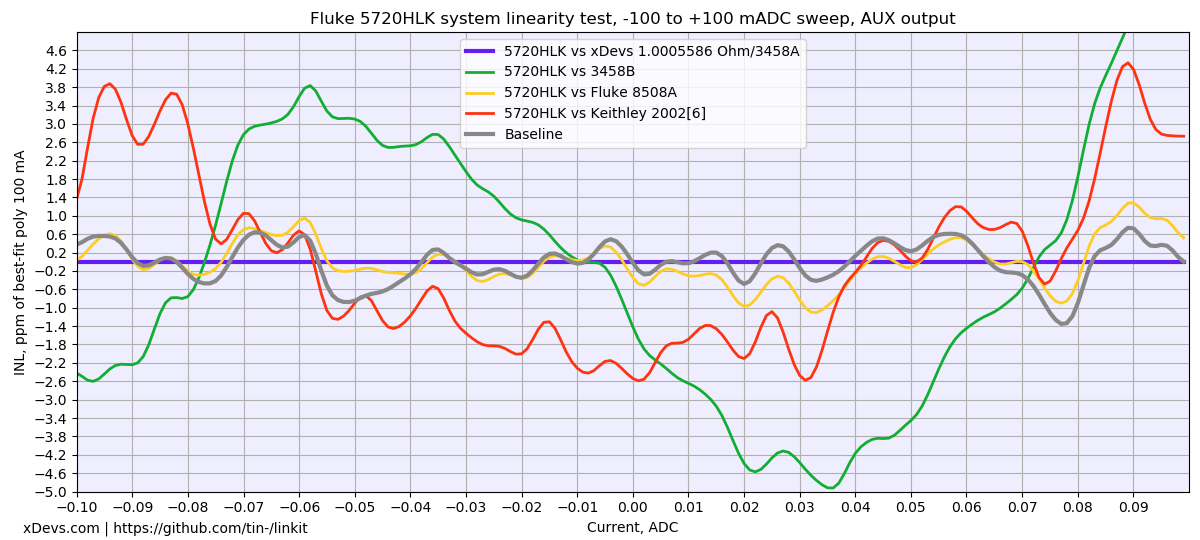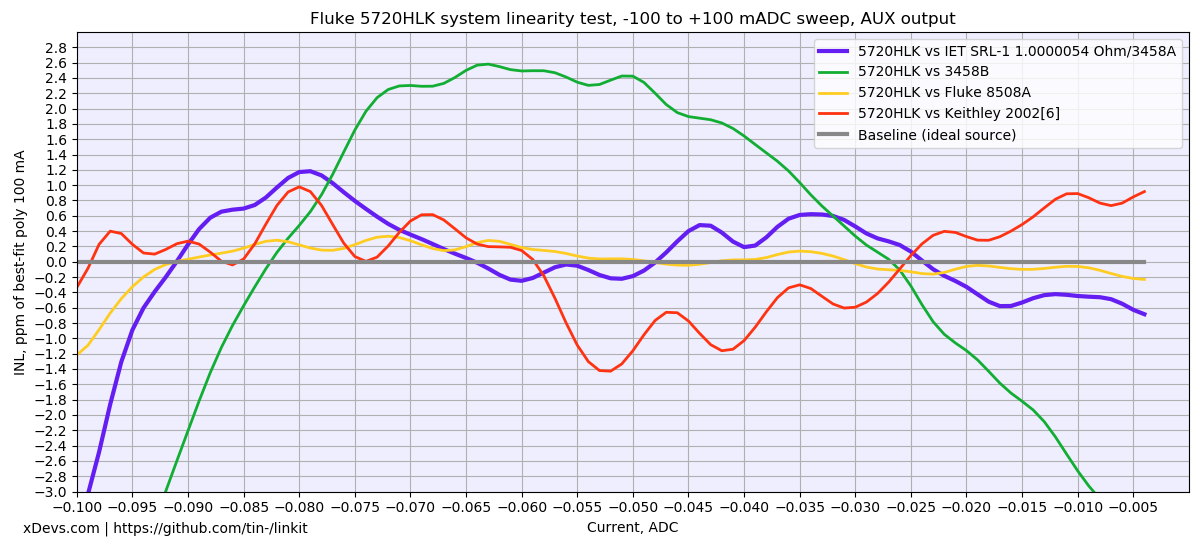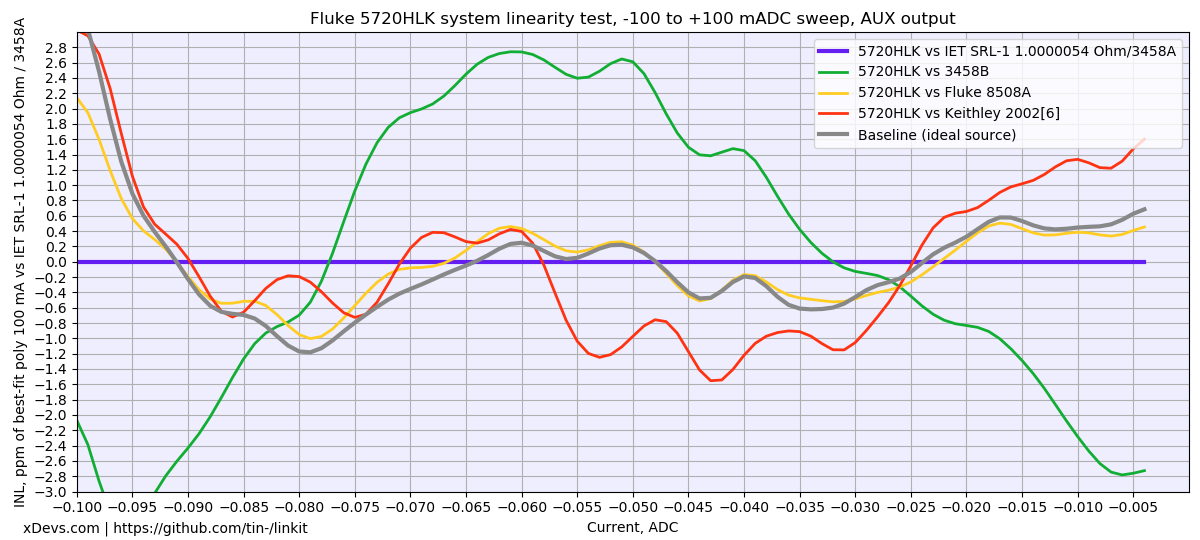I don't agree with the calibrated reference. You can learn a lot through a step response.
Didn't say we can't learn anything yet. I just mean we don't know real current values, only can estimate the stability of unknowns over the currents span.
I have completed some additional tests, using 4-terminal 1 ohm resistor as a shunt, with 3458A as detector on 100mV range.
Sweeps are 100mA, to keep thermals reasonable, as we don't have oil bath here

.
I have used
this resistor, build during livestream for first test. It is simple
VPR221 1 Ohm 4-wire TO-220 BMF in a cast metal box, with Low Thermal posts.
Loop:
a) 3458B on 100mA range
b) F8508A, on 190mA range
c) K2002 on 200mA range
Plot using calibrator programmed value as ideal reference.

Now same data, but using reading from 1ohm/3458A shunt setup as ideal reference.

And repeated sweep but with IET SRL-1 standard resistors instead. Calibrator as ideal reference.
Please note, SRL-1 sweep is only -100 mA to 0 mA, so it's only half of the graph above. 
Now same data, but using reading from SRL-1 1ohm/3458A shunt setup as ideal reference.

So far I can only see that 8508 and calibrator are tracking the best, while 3458B being the worst.
DIY 1 ohm also tracks well, better than SRL-1 in these coarse tests.